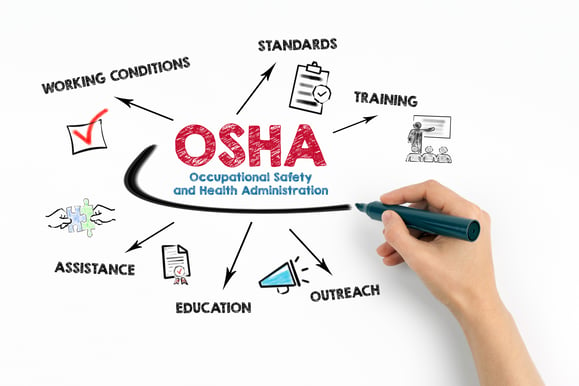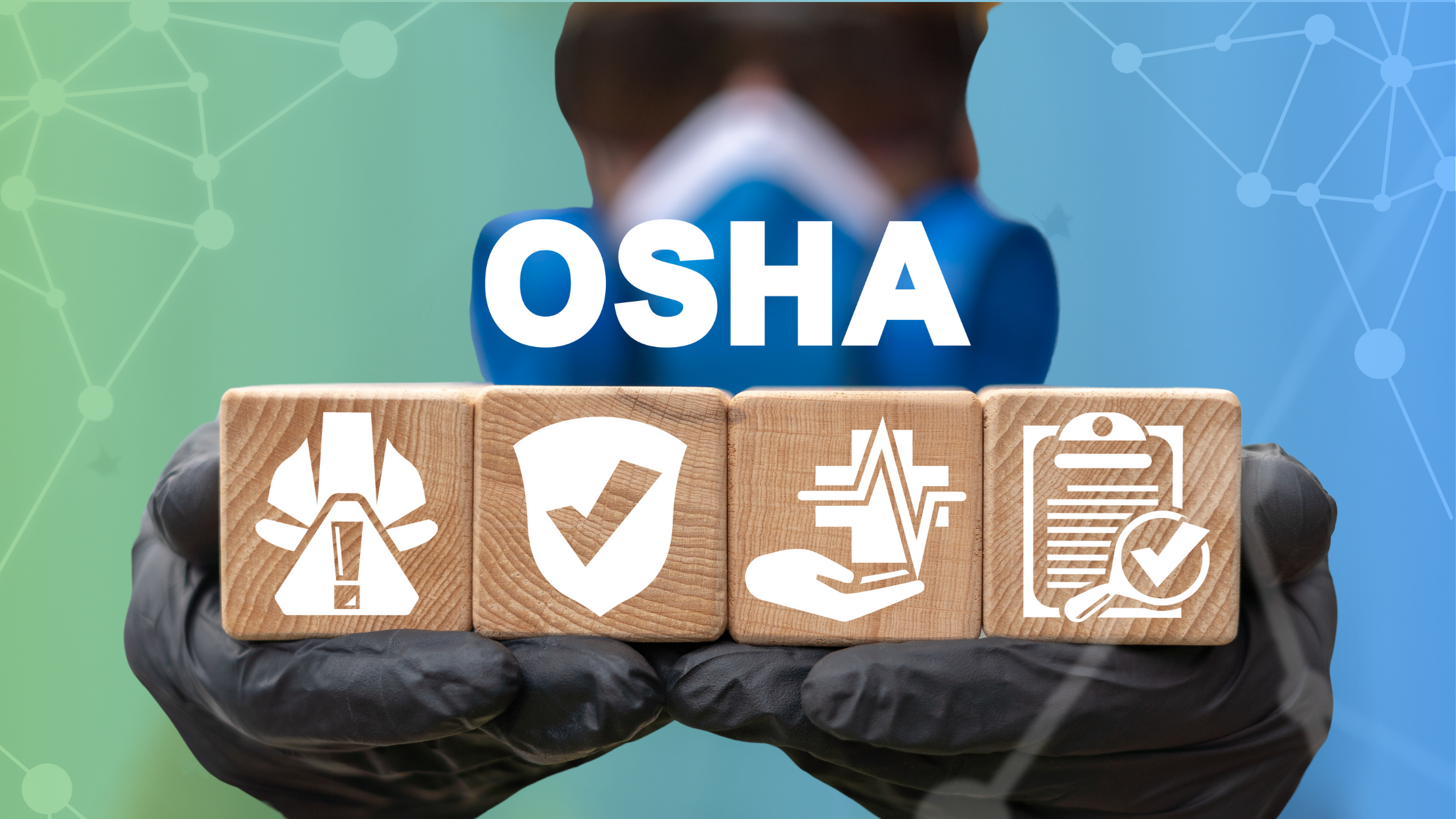The Occupational Safety and Health Administration (OSHA) plays a vital role in ensuring safe and healthy working conditions in the United States.
OSHA enforces a set of regulations that establish minimum standards for employers to protect their workforce from hazards. Understanding and complying with these regulations is an essential responsibility for all businesses, regardless of size or industry.

Why is OSHA Compliance Important?
OSHA compliance is more than just a legal obligation; it’s a core responsibility for businesses that translates into numerous benefits for both employers and employees. Here’s a deeper dive into why prioritizing OSHA compliance is essential:
- Reduced Work-Related Injuries and Illnesses: OSHA regulations are designed to prevent a wide range of safety and health hazards in the workplace. By complying with these standards, employers can significantly reduce the occurrence of work-related injuries and illnesses (WRIs). This translates to fewer employees suffering physical pain, emotional trauma, and lost wages due to on-the-job accidents or illnesses.
- Lower Healthcare Costs: WRIs come with a hefty price tag for businesses. Medical treatment costs, workers’ compensation claims, and disability payments can significantly impact an organization’s financial bottom line. OSHA compliance helps minimize these costs by preventing WRIs in the first place.
- Increased Productivity: Workplace accidents and illnesses not only cause physical harm but also disrupt workflow and productivity. Employees dealing with injuries or illnesses may be absent from work, and those who are present may be less focused due to pain or worry. By fostering a safe work environment, OSHA compliance helps maintain a healthy workforce and minimize disruptions, leading to increased productivity and overall efficiency.
- Improved Employee Morale: Working in a safe and healthy environment where employers prioritize their well-being can significantly boost employee morale. Employees feel valued and respected when their safety is not compromised. This leads to increased job satisfaction, reduced absenteeism, and a more positive work environment overall.
- Enhanced Employer Reputation: A strong safety record demonstrates an organization’s commitment to its employees’ well-being. This can attract and retain top talent, improve public image, and give businesses a competitive edge. In contrast, a history of safety violations can damage an organization’s reputation and lead to negative publicity.
- Reduced Risk of Legal Issues: Non-compliance with OSHA regulations can result in hefty fines and penalties. In severe cases, organizations may face legal repercussions if workplace safety violations lead to serious injuries or fatalities. By proactively ensuring compliance, employers can minimize legal risks and protect their organization.
Overall, OSHA compliance is not just about following the rules; it’s about creating a win-win situation for both employers and employees. By prioritizing safety and health standards, organizations can foster a more positive work environment, minimize costs, and achieve their overall business goals.
Key OSHA Regulations for Employers
While OSHA covers a wide range of workplace safety and health standards, here are some of the most critical regulations every employer should be familiar with:
- The General Duty Clause: This foundational principle of the Occupational Safety and Health Act (OSHA Act) requires employers to provide a workplace free from recognized hazards likely to cause serious physical harm. It essentially mandates proactive measures to ensure employee safety.
- Hazard Communication Standard: This regulation requires employers to develop and implement a written hazard communication program if they have hazardous chemicals in their workplace. The program must include training employees on the hazards associated with these chemicals, safe handling procedures, and the availability of safety data sheets (SDS).
- Personal Protective Equipment (PPE) Standards: OSHA has specific regulations mandating the use of PPE to protect employees from workplace hazards. These standards specify the types of PPE required for various tasks and outline employer responsibilities regarding selection, maintenance, and training for PPE use.
- Recordkeeping Requirements: Employers are obligated to maintain records of work-related injuries and illnesses as outlined by OSHA standards. These records play a crucial role in identifying workplace safety trends and implementing preventive measures.
- Specific Industry Standards: In addition to these general regulations, OSHA establishes specific safety and health standards for various industries like construction, maritime, and agriculture. Employers must comply with the standards applicable to their specific industry.

Resources for OSHA Compliance
Navigating the complexities of OSHA regulations can feel overwhelming. Fortunately, OSHA offers a comprehensive suite of resources to assist employers in achieving and maintaining compliance. Here’s a closer look at some of the valuable tools and services available:
- OSHA Website: The official OSHA website, https://www.osha.gov/, serves as a central hub for all OSHA-related information. It provides a wealth of resources, including:
- Standards and Regulations: Access to the complete collection of OSHA standards, searchable by industry, topic, or standard number.
- Compliance Assistance Tools and Guides: User-friendly resources like quick start guides, checklists, and eTools to help employers navigate specific OSHA requirements. These tools can guide you through processes like hazard communication program development or respiratory protection standard implementation.
- Publications: A vast library of downloadable publications, including safety data sheets (SDS), fact sheets, and technical manuals, covering various workplace safety and health topics.
- Training Resources: Information about OSHA-approved training programs for employers and employees on various safety and health topics. These programs can help ensure your workforce understands OSHA regulations and safe work practices.
- OSHA Outreach Training Programs: OSHA offers Outreach Training Programs for both employers and employees. These programs provide basic and advanced training on OSHA standards and recognition and prevention of workplace hazards. Completing these programs can be beneficial for demonstrating your commitment to safety and fulfilling training requirements for certain OSHA standards.
- Free and Low-Cost Training Programs: OSHA frequently conducts free or low-cost training workshops and webinars on various safety and health
 topics. These programs offer a cost-effective way for employers and employees to stay up-to-date on OSHA regulations and best practices.
topics. These programs offer a cost-effective way for employers and employees to stay up-to-date on OSHA regulations and best practices.
- On-Site Consultation Services: OSHA offers free and confidential on-site consultation services to small and medium-sized businesses. A consultation involves a safety and health professional visiting your workplace to identify potential hazards, provide guidance on compliance with OSHA standards, and recommend preventive measures.
- State Plan Consultation Programs: Many states operate their own OSHA-approved State Plan Consultation Programs. These programs offer similar services as the federal program, tailored to state-specific regulations.
- OSHA Hotline: The OSHA hotline (1-800-321-OSHA) provides a direct line to speak with an OSHA representative. You can ask questions about specific regulations, report potential safety hazards, or request clarification on compliance requirements.
By utilizing these resources effectively, employers can gain a clear understanding of their OSHA compliance obligations, develop and implement safety and health programs, provide necessary training to employees, and ultimately create a safer and healthier work environment for everyone.
The Last Word on OSHA Compliance
Understanding and complying with OSHA regulations is an ongoing process, but it’s a crucial investment in the well-being of your employees, the success of your organization, and the overall safety culture within your industry. Here are some key takeaways to remember:
- Stay Informed: OSHA regulations and standards are subject to revisions. Regularly checking the OSHA website for updates and signing up for their newsletter can help you stay informed about any changes that may impact your compliance obligations.
- Seek Professional Guidance: For complex issues or industries with highly specific safety requirements, consider seeking guidance from qualified safety professionals. They can provide expert advice on compliance strategies, hazard identification and mitigation, and program development.
- Develop a Culture of Safety: Compliance goes beyond just meeting the minimum requirements. Foster a culture of safety within your organization by actively involving employees in safety initiatives, encouraging open communication about safety concerns, and recognizing safe work practices.
- Continuous Improvement: View safety and health compliance as an ongoing journey, not a destination. Regularly evaluate your safety programs, identify areas for improvement, and implement corrective actions to continuously enhance your workplace safety culture.
By prioritizing OSHA compliance and proactively managing workplace safety and health, organizations can create a win-win situation. They can protect their employees, minimize costs associated with WRIs, boost employee morale, enhance their reputation, and ultimately achieve their long-term business goals. Remember, a safe and healthy workplace is not just a legal requirement; it’s a smart business decision.

